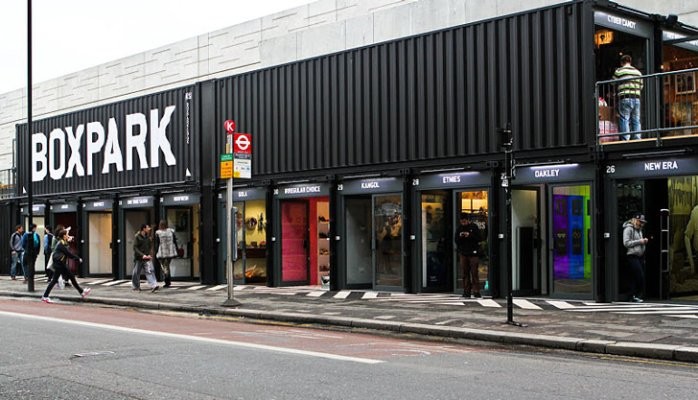
How to save the high street, part two: pop-ups?
Last year, a study by EE claimed that a third of new businesses over the next two years will start as pop-ups. It also claimed that nearly half of UK consumers had visited a pop-up shop in the last 12 months, and that pop-ups generated more than £2.3 billion in turnover over the same period.
The pop-up craze, originating in the US but now well-established in the UK, was championed by Mary Portas as part of her high street regeneration campaign. Even Eric Pickles, then communities secretary, got the pop-up bug in 2012 when he turned part of his own office into a revolving pop-up space.
But can pop-up retail really save the high street? Or at the very least, can it play a part in the high street’s revival?
Pop-ups can drive increased footfall to the high street
As is regularly suggested by Emma Jones, founder of Enterprise Nation (and associated organisations StartUp Britain and PopUp Britain), pop-ups drive footfall to British high streets. From her point of view, that is only a happy by-product of the fundamental goal – to give entrepreneurs an affordable way of getting their business on to the high street. But pop-ups create a buzz that benefits not only the pop-up itself but the high street as a whole.
This buzz is largely attributable to the transient nature of pop-up retail. It’s very common for pop-ups to trial their wares for between two weeks and a month, so for local shoppers, this keeps their high street fresh and exciting. And given the recent struggles of many well-established retail chains lacking in fresh ideas, this is significant.
Customers are clearly hungry for new ideas all the time, and pop-up spaces can feed that appetite.
Pop-Up Britain charged entrepreneurs just £150 to share a space with five other small businesses, so demand was easily met both by entrepreneurs and shoppers.
Meanwhile, We Are Pop Up has taken the pop-up concept further, allowing small businesses to rent and share a wide variety of spaces throughout London and New York. It offers entrepreneurs the chance to rent all types of retail spaces, but through ShopShare it also offers a cheaper alternative where it’s possible to merely rent a table or rail in a shared space. Additionally, landlords get a great deal of flexibility over how they rent their properties. It’s a fantastic concept that’s working for shoppers, retailers and landlords alike.
Outside of London, pop-up growth is slower
Pop-up retail has spread all over the UK, but it’s inevitably less prominent outside of London, which is one of its inherent weaknesses. It’s also part of the reason that critics view it as a temporary gimmick, and a hipster sideshow to more serious and practical high street problems.
However, the rest of the UK is not to be underestimated. EE’s survey also revealed that in 2015, more people in the South West visited a pop-up shop than Londoners. And even in the North East, where the number of pop-up stores is considerably lower than in the south, nearly 35% of people said they’d visited a pop-up.
And the lack of pop-ups outside of London does not necessarily reflect a lower demand. More people in both the North East and Wales believe that pop-up retail can save the high street than in London.
Can pop-ups become too popular for their own good?
Some critics think that pop-up as a concept is dangerous, because pop-ups can become a victim of their own success.
With customers wanting new ideas constantly, it gets increasingly challenging to keep them happy. And unfortunately, there’s evidence that when success and footfall follows, rents quickly rise. As a result, the original purpose of having a pop-up space is compromised.
This is now becoming a problem in London, where pop-up rents in certain locations can be as high as using a permanent space. An added problem is that when particular locations become pop-up hotspots, larger retailers are now typically attracted to using them as their own pop-up spaces – trialling new products and squeezing out small businesses. You’ll see this problem emerging in trendy areas of East London, and the result is less diversity.
So, how important are pop-ups?
The stats suggest they have an important role to play. They might not be the saviour of the British high street, but they certainly can help to save it. They give small businesses a vital means of trialling ideas and growing their businesses, and they help to keep our high streets fresh, and most importantly, busy.
However, success could lead to pop-ups being unsustainable. And many landlords are still understandably cautious, wanting the security of long-term rent.
So what do you think? A fad, or the future? I’d love to hear your thoughts.
-------------------
Christian Nellemann is the Founder and CEO of XLN, a provider of low-cost phone, broadband, energy and card processing services exclusively to small businesses. He is a serial entrepreneur and a two-time winner of Ernst & Young’s Entrepreneur of the Year award. He is passionate about small businesses, start-ups, and helping to build thriving, independent high streets across the UK.
Follow him on Twitter @christianxln.